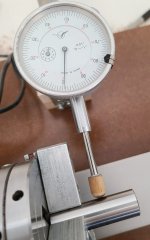Really? 1 MM at least? I have been doing this for about 22 plus yrs and have NEVER needed to remove that much to get a ferrule of any material flat faced. A Bit of an overstatement on your part maybe? That amounts to .039". Even on the ones that people have used for breaking, I never had to remove that much. I have had deformed ferrules, and on the cheap cues with the chinese high temp plastic ferrules, I have had quite a few come off until I spent a lot of time assessing and asking. Funny thing is that the tip they come from the factory with always seems to be solidly attached, usually. So, if the factory can do it, why can't we? When it comes to break cues with the high temp plastic ferrule, I inform the customer that I use the best adhesive for this, but it may pop off after I put a tip on, and if it does, give me the tip, and I will replace the ferrule with a phenolic one at a fee just for the ferrule. I used to do it for free, and found I was losing $$$ so I talked to the 3M guys and found CA40 which works amazing, but as stated above....costly. Now I use DAP rapid fuse. Good research, and practices plus adhesives designed for the job is the answer, but sometimes (rarely lately) even changing the ferrule is needed, not drilling, adding tenons, plugs etc. IMO, that is hack work. My belief is if the factory can do it right, so can I if I put in the right effort and research. Ever notice that when removing the original tip, they don't let go when you are machining them off? You have to machine it all the way off....that tells me that they use a glue that bonds well, so stands to reason, we need to know what it is, not come up with work arounds that may even compromise the ferrule or tenon integrity overall. I also don't leave a break tip at a tall height, The taller the tip, the more a miscue will be amplified in relation to shear force (side force) I cut the tip down about a 3rd, then shape. A white diamond will last for yrs at that height but by doing this, it lessens the chance of a tip flying off due to a miscue.

 www.harborfreight.com
www.harborfreight.com

 www.harborfreight.com
www.harborfreight.com


